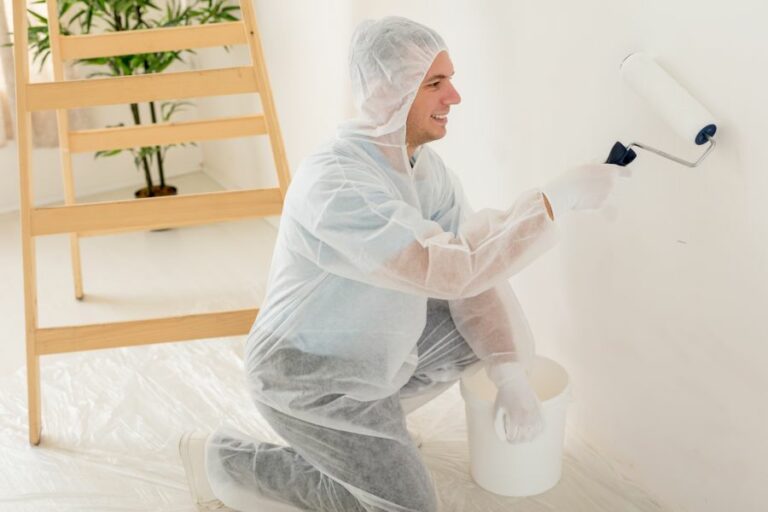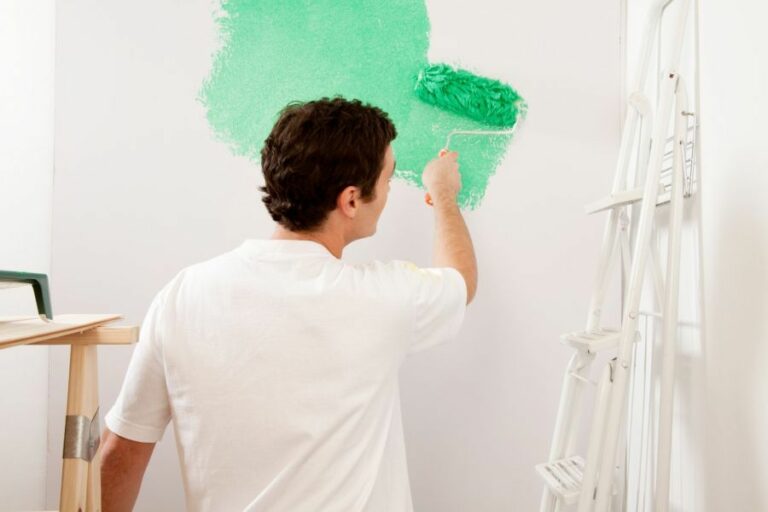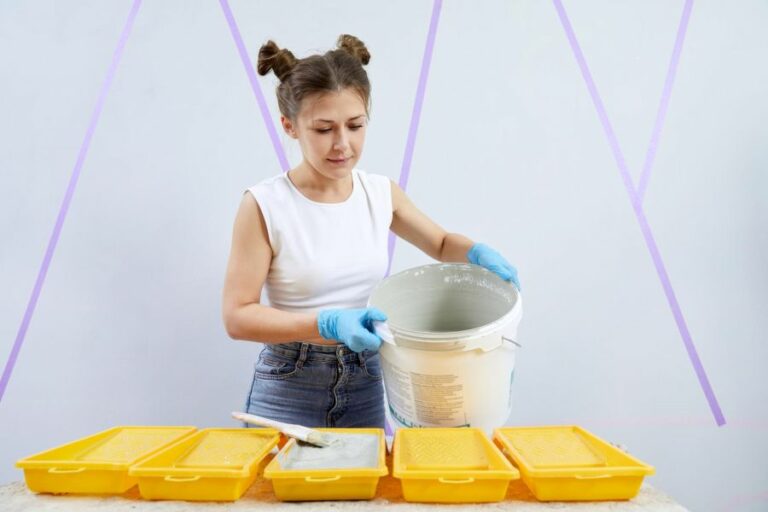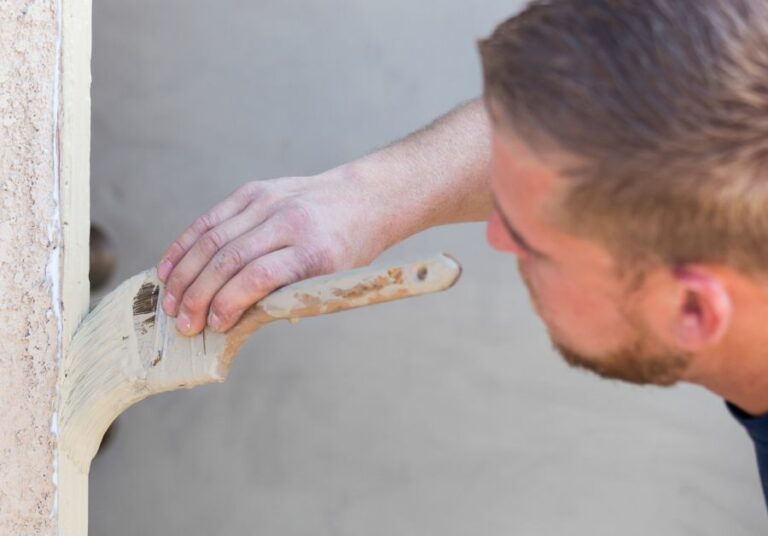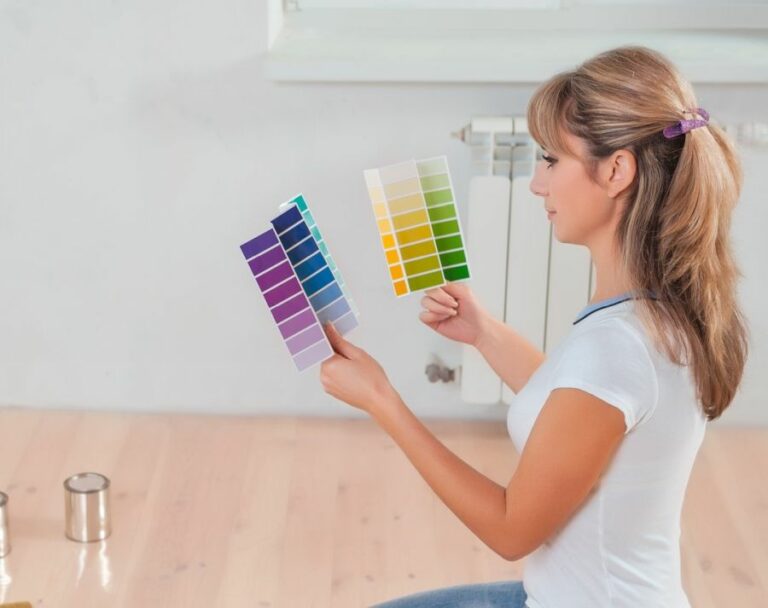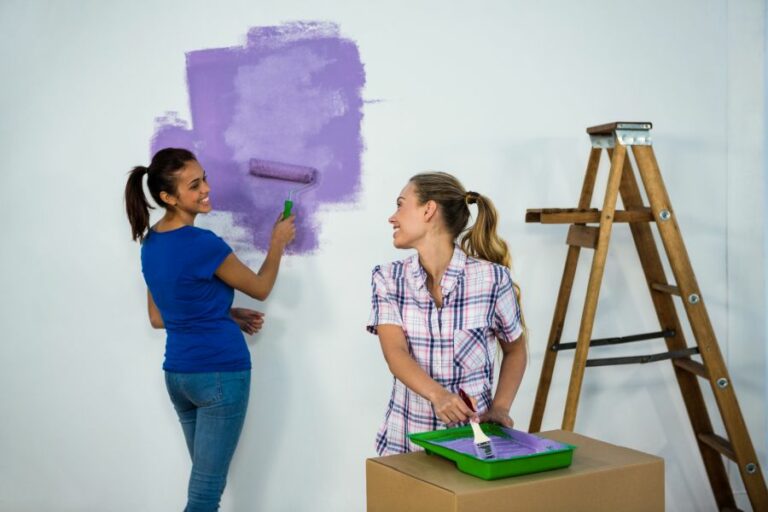Textured Indoor Paint Choices, 25 Things You Should Know
Are you considering giving your home a fresh new look? Textured indoor paint choices have gained popularity in recent years and offer a fantastic way to add character and depth to your interiors. With the wide variety of options available, selecting the perfect finish to suit your style can be overwhelming.
Textured indoor paint choices:>
Textured indoor paint is a unique and visually appealing alternative to traditional finishes. The different types include sand texture paint, Venetian plaster paint, popcorn texture paint, knockdown texture paint, and faux texture paint. These options help conceal imperfections, add depth to a room, and provide a more engaging tactile experience. Choose a type based on your budget, style, purpose, and maintenance preferences.

Dive into the world of textured indoor paint choices and discover the vast array of options available! From subtle to bold, matte to glossy, and everything in between, you’ll find the perfect paint finish to express your unique style. Read on, and let’s explore this captivating design element together.
Contents
- 1 Diverse Interior Paint Textures for Your Home
- 2 Top Interior Wall Paint Textures to Consider
- 3 Paint Options for a Textured Finish Indoors
- 4 Wall Paints with Built-in Texture: A Guide
- 5 Utilizing Textured Paints for Indoor Spaces
Diverse Interior Paint Textures for Your Home
A well-decorated interior adds elegance and style to any home. One way to achieve a unique and attractive look is by using textured indoor paint. Textured paint alternatives provide a perfect solution for homeowners looking to enhance their wall surfaces and achieve a more visually appealing finish.
• Types of Textured Indoor Paint
There are a variety of textured indoor paint choices available to fit your style and budget. The following are some popular categories to consider:
– Sand Texture Paint
Sand textured paint incorporates fine sand particles to create an appealing rough appearance on the wall. This texture is ideal for covering up imperfections like uneven surfaces, cracks, or small holes. Sand texture paint dries quickly and is easy to apply, making it a favorite among DIY enthusiasts.
– Venetian Plaster Paint
Venetian plaster paint provides a luxurious, marble-like finish to walls, giving your home an upscale touch. This technique involves layering multiple coats of colored plaster and then sanding and polishing it to create a rich and textured appearance.
Venetian plaster paint requires a skilled professional for application but offers long-lasting durability and elegance.
– Popcorn Texture Paint
Popcorn texture paint, also known as cottage cheese texture, is characterized by its bumpy surface with irregular patterns. It is ideal for ceilings, as it helps in soundproofing and hiding imperfections. However, this texture is not recommended for walls due to its roughness and difficulty in cleaning.
– Knockdown Texture Paint
Knockdown texture paint provides a rustic, Mediterranean-inspired look with its mottled appearance. It involves applying a base layer of paint followed by a textured layer, which is then knocked down or smoothed with a trowel.
Knockdown texture adds warmth and depth to a room, making it a popular choice for living areas and bedrooms.
– Faux Texture Paint
Faux texture paint involves using different techniques, such as sponging, ragging, or combing, to create an illusion of texture on smooth surfaces. This style offers versatility and creativity, as you can achieve various finishes, from a cool marble effect to a warm, suede-like appearance.
• Advantages of Textured Indoor Paint
There are several reasons why homeowners might opt for textured indoor paint instead of traditional smooth finishes:
- Concealing Flaws: Textured paint camouflages wall imperfections, such as cracks, uneven surfaces, or nail holes, providing a visually appealing alternative to wall repairs.
- Durability: Textured paint offers better resistance to wear and tear than traditional flat or satin finishes. It is also easier to maintain and repair.
- Unique Visual Appeal: Textured paint adds depth and character to your walls, allowing you to personalize your space and create a distinct ambiance.
- Tactile Experience: A textured surface offers a more engaging tactile experience than smooth surfaces. In some cases, such as Venetian plaster, the texture can provide a luxurious, high-end finish.
• Recommendations for Selecting Textured Indoor Paint
To choose the right textured indoor paint for your home, consider the following factors:
- Budget: Textured paint can range from affordable options like sand texture paint to more expensive and labor-intensive finishes like Venetian plaster. Evaluate your budget before selecting a suitable option.
- Style: Consider the overall aesthetic you wish to achieve in your home. The texture should complement the other design elements in your space.
- Purpose: If hiding wall imperfections is your primary goal, opt for sand-textured or knockdown paint options. On the other hand, if you want to add depth and richness to your walls, consider Venetian plaster or faux finishes.
- Maintenance: Certain textures, like popcorn paint, can make it difficult to clean your walls. If a low-maintenance finish is essential to you, opt for a smoother texture like Venetian plaster.
For additional information on textured indoor paint, consult resources like the Paint Quality Institute, which provides in-depth knowledge, tips, and recommendations on paint and decoration.
• Conclusion
Textured indoor paint offers a unique and visually appealing alternative to traditional paint finishes. It allows you to conceal wall imperfections, add depth to your interior design, and create a personalized atmosphere in your home.
By choosing the right texture, you can elevate the look of your space and enjoy a more engaging, tactile experience.
Top Interior Wall Paint Textures to Consider
Painting the interior walls of a home or office is among the most effective ways to give the space a fresh new look. With a wide range of paint textures available in the market, it can be a daunting task to choose the right one that suits your needs and preferences.
• Types of Paint Textures
Before diving into the best paint texture, it is essential to explore the different types of textures that are commonly used for interior walls. These textures are generally classified into both premixed and custom textures.
– 1. Premixed Textures
Premixed paint textures are readily available in various finishes and do not require any additional work before application. Some popular examples include:
a. Smooth Paint Texture
Smooth paint texture offers a uniform and polished finish. It is ideal for walls with minimal surface imperfections and requires minimal preparation before painting. Smooth finishes are commonly used in bedrooms, living rooms, and dining rooms to achieve an elegant look.
b. Eggshell Paint Texture
Eggshell texture carries a low sheen resembling the surface of an eggshell. It is easy to clean and maintain, making it a popular choice for high-traffic areas like hallways, kitchens, and bathrooms.
c. Satin Paint Texture
Satin is a mid-sheen texture that falls between eggshell and semi-gloss finishes. It provides a smooth surface that is ideal for easier cleaning and is perfect for family rooms, children’s bedrooms, and laundry rooms.
Satin paint is not recommended for walls with noticeable imperfections as it tends to highlight them.
d. Matte Paint Texture
Matte paint has a soft flat finish that hides surface imperfections well. It is commonly used in the ceilings of living rooms and bedrooms to create an intimate ambiance. However, it’s worth noting that matte paint tends to be less durable and struggles with moisture resistance.
– 2. Custom Textures
Custom paint textures are unique finishes that require a mix of different materials and techniques. Some noteworthy examples include:
a. Orange Peel Texture
Orange peel, as the name suggests, mimics the texture of an orange peel. It is achieved by using a thin mix of drywall compound or plaster and applying it to the walls using a spray gun. The texture helps conceal imperfections on the walls, is visually appealing, and fairly easy to apply.
b. Sand Texture
Sand texture is created by mixing fine sand into the paint, resulting in a grainy and rough surface. This texture is popular for its durability and works well in high-traffic areas as it effectively hides imperfections on the walls.
c. Knockdown Texture
Knockdown texture is a versatile and popular finish that resembles stucco. It is achieved by spraying a mixture of water, drywall compound, and paint onto the walls and knocking it down with a drywall knife.
The result is a visually appealing, unique finish that hides imperfections while adding depth and dimension to the space.
• Choosing the Best Paint Texture for Your Interior Walls
Determining the best paint texture for your interior walls depends on several factors, including your personal preferences, the purpose of the space, and the condition of the walls. Here are some useful tips and recommendations to keep in mind when selecting the paint texture.
1. Assess the Room’s Functionality
Consider the primary function of the room when selecting a paint texture. Smooth or eggshell finishes work well for bedrooms and living areas, while satin, semi-gloss, or high-gloss finishes are better suited for bathrooms, kitchens, and other high-traffic spaces where durability and easy cleaning are important.
2. Consider the Wall Condition
Before deciding on a paint texture, take into account the wall condition. If the walls have imperfections or uneven surfaces, custom textures like orange peel, sand, or knockdown are excellent options due to their ability to mask these imperfections.
3. Personal Preference and Aesthetic Appeal
Lastly, consider your personal preference and the overall aesthetic that you’re looking to achieve. Experimenting with various textures and finishes will help you better visualize how the final result will look in your space.
• Final Thoughts
There is no one-size-fits-all solution when it comes to choosing the best paint texture for interior walls. However, by considering various factors like the room’s functionality, wall condition, and personal preference, you can make an informed decision that suits your requirements.
For further information and detailed instructions on different paint textures and their applications, visit a reputable site like the DIY Network.
No. | Texture Type | Benefits | Limitations |
|---|---|---|---|
1 | Flat | Provides matte finish, hides imperfections, and absorbs light | Difficult to clean |
2 | Eggshell | Low-sheen finish, easy to clean, and moderately hides imperfections | Not as matte as flat paint |
3 | Satin | Offers subtle shine, easy to clean, and more durable than eggshell | Imperfections may be more visible |
4 | Semi-gloss | Reflects light, easy to clean, and more resistant to moisture and stains | Imperfections may be very visible |
5 | Gloss | Highly reflective, durable, and easy to clean | May exaggerate imperfections and not suitable for all surfaces |
Paint Options for a Textured Finish Indoors
Textured paint adds dimension, depth, and visual interest to a wall, ceiling, or other surface. There are many types and brands of paint on the market that provide a textured look, offering a variety of styles and finishes.
• 1. Acrylic Texture Paint
Acrylic texture paint is a water-based paint that contains added materials such as sand, perlite, or gypsum to provide texture. This type of paint can be applied with a brush, roller, or trowel, depending on the desired effect.
Because of its versatility in application, acrylic texture paint is excellent for creating a variety of texture styles, such as stucco, sand, or plaster.
In my experience, I recommend using acrylic texture paint for smaller projects or areas where a subtle textured finish is desired. However, it’s essential to note that this type of paint may require an additional layer of clear protective coating to prevent chipping and enhance durability.
• 2. Venetian Plaster
For a more luxurious and sophisticated texture, Venetian plaster offers a smooth, polished look with the appearance of depth and movement. Based on traditional Italian techniques, this type of paint is made from lime putty, marble dust, and pigments that can create a marble-like effect.
Application of Venetian plaster requires skill and patience, as it typically involves several layers applied with a trowel and then burnished to achieve the desired finish.
I’ve found that this type of paint works best in elegant settings and can be especially stunning in areas with natural light to highlight the surface’s reflective properties.
More information on Venetian plaster techniques and applications can be found at the National Park Service website.
• 3. Knockdown Texture
Achieving a knockdown texture involves applying a thick layer of joint compound or texture paint to the surface, then using a trowel or another flat tool to “knock down” the peaks and create a smooth yet varied texture.
This type of textured paint finish is popular in both residential and commercial settings, as it can help hide imperfections and add visual interest to large wall spaces.
In my experience, knockdown texture works well in areas where moderate texture is desired, as the finish can be adjusted to be subtle or more pronounced, depending on your preference.
• 4. Textured Spray Paint
Textured spray paint is a convenient solution for adding texture to smaller, hard-to-reach areas or surfaces with intricate details. This type of paint comes in an aerosol can and is sprayed directly onto the surface, creating a textured effect as it dries.
Textured spray paint is available in several different styles, including stone, sand, and hammered metal textures.
I recommend using textured spray paint for smaller projects, furniture, or accent pieces where a unique texture can add character and dimension.
• 5. Distressed Paint Finish
For a more rustic or vintage look, a distressed paint finish can be achieved using a combination of paint types and application techniques. This often involves applying multiple layers of paint in contrasting colors, then sanding or using other distressing methods to reveal the layers and create an aged, textured appearance.
From my experience, distressed paint finishes work best on furniture pieces, cabinetry, or decorative accents, where the textural elements can add charm and character.
• Choosing the Right Paint and Technique for a Textured Look
When selecting a textured paint, it’s essential to consider the following factors:
- The desired style and finish: Different types of textured paint will produce various effects, ranging from subtle to highly textured. Consider the overall design of the space and the look you want to achieve before deciding on a specific paint type.
- The size and complexity of the project: Some textured paint finishes may require more extensive preparation and application time, especially if specialized techniques are needed. Be realistic about your skill level and time constraints when selecting a paint type and texture style.
- The durability and maintenance requirements: Textured surfaces may be more challenging to clean and maintain, especially highly textured or detailed finishes. Keep this in mind when selecting a paint type, and consider adding a protective layer or sealant if needed.
- The type of surface being painted: Not all textured paint types are suitable for every surface. Be sure to verify whether the chosen paint is compatible with the material being painted, such as drywall, concrete, or wood.
In conclusion, achieving a textured look with paint involves selecting the right paint type, mastering the necessary application techniques, and considering factors such as the desired effect, project size and complexity, and surface type.
By exploring the various types of textured paint available and practicing your application skills, you can create stunning effects that enhance the visual interest and character of any space.
Wall Paints with Built-in Texture: A Guide
Painting a wall can definitely transform the look of a room or even an entire house. A variety of paints are available in the market to meet the unique requirements of consumers. Among those options is textured paint.
• Benefits of Textured Wall Paint
Textured wall paint has several advantages over regular paint. Some of these benefits include:
– Durability
Textured paint is thicker and more durable than ordinary paint, making it less likely to get damaged over time. This property of textured paint also helps to protect the surface beneath it from regular wear and tear.
– Aesthetics
Adding texture to walls helps to create a distinct look and adds depth to a room. Textured paint can significantly enhance the visual appeal of an otherwise monotonous space.
– Hiding Imperfections
Due to its consistency, textured paint also helps conceal wall imperfections, such as cracks and uneven surfaces. Textured paint can be a great option for older walls that may have accumulated minor damages over time.
– Versatility
Textured paint is available in a variety of colors and textures, giving you the option to choose the perfect fit for your project.
• Types of Textured Wall Paint
There are two main types of textured wall paint: premixed and self-mixing.
– Premixed Textured Paint
Premixed textured paint, as the name suggests, comes with texture already added. It consists of a thick, paste-like consistency due to the addition of sand, perlite, or other similar materials. You can find premixed textured paint in various textures, ranging from coarse to fine.
This type of paint is easier to work with as it eliminates the guesswork in achieving the desired consistency.
– Self-Mixing Textured Paint
With self-mixing textured paint, you will need to mix a texture additive into your paint. The additives can be sand, perlite, or other granular materials. This type of paint provides you with greater control over the texture and consistency, allowing for more customization.
• Applying Textured Wall Paint
To achieve the best results when applying textured paint, consider the following tips:
– Prep the Surface
Before applying textured paint, always clean, repair any damages, and prime the surface. This step ensures a smooth application and a professional-looking finish.
– Use the Right Tools
For premixed textured paint, use a paint roller with a thick nap or a trowel to apply the paint. For self-mixing paint, use a roller and a mixing paddle to mix the additive with the paint.
– Apply in a Consistent Manner
When applying the paint, maintain consistent pressure on the roller or trowel to ensure an even texture throughout the wall. Be patient and take your time to achieve the desired look.
– Experiment with Techniques
Various techniques can be used to create different effects and textures on the wall. You can use a sponge, stippling brush, or trowel to create different patterns. Don’t be afraid to experiment with different tools and techniques!
– Practice
Before you start painting the actual wall, it is always a good idea to practice your skills on a spare piece of drywall or plywood. This will help you get comfortable with the techniques and achieve a more consistent result on your final project.
• Additional Resources
To learn more about textured wall paint and its applications, visit the following websites:
- The Paint Quality Institute: This non-profit organization offers a wealth of information about paint, including articles, videos, and tips on various painting techniques.
- The DIY Network: This popular website offers a wide range of tutorials, step-by-step guides, and tips on various painting projects, including textured paint applications.
In conclusion, textured wall paint can be an excellent option for those looking to add durability, aesthetics, and versatility to their walls. By following the tips provided in this article and experimenting with various techniques, you can achieve the desired textured look for your next painting project.
Utilizing Textured Paints for Indoor Spaces
One of the most common questions homeowners and interior design enthusiasts have is “Can you use textured paint indoors?”. The answer, quite simply, is yes. Textured paint is an excellent option to add depth and visual interest to your interior walls.
• Benefits of Using Textured Paint Indoors
– Aesthetic Appeal
Textured paint can transform the appearance of your walls, providing depth, character, and a unique touch that sets your space apart. It is a fantastic way to make a statement, either by accentuating a focal point or by creating an interesting backdrop for your interior design.
– Concealing Imperfections
Textured paint is excellent at hiding surface imperfections, such as cracks, uneven patches, or minor damage on your walls. The thick composition and 3D pattern of the paint helps mask these issues, making your walls look smoother, even if they are not.
– Enhanced Durability
Textured paint is known for its increased resistance to wear and tear compared to standard paint. The added texture provides a protective layer against scuffs, scratches, and incidental damage, making it an ideal choice for high-traffic spaces or households with children and pets.
• Types of Textured Paint
– Premixed Textured Paint
This type of textured paint comes with sand or other additives already mixed in, providing a consistent texture throughout the paint. Premixed textured paint is a convenient option, as it saves time and effort on your part – all you need to do is apply it with a brush, roller, or spray gun.
– Self-Mixing Textured Paint
With self-mixing textured paint, you create the desired texture by adding your chosen additives, such as sand, perlite, or gypsum, to a standard paint base. This provides the flexibility to customize the texture to your preferences and experiment with various effects.
• Application Techniques for Textured Paint
– Brush Techniques
Textured paint can be applied using various brush techniques, such as dabbing, stippling, or patting, to create different effects. You may also use special texturing brushes or tools, like a sponge or a rag, to enhance the final look.
– Rolled Textures
A paint roller is an easy way to apply textured paint, especially for larger areas. By using different roller covers and applying pressure in various ways, you can achieve a range of effects, from subtle to dramatic.
– Trowel Techniques
Applying textured paint with a trowel allows for more intricate and detailed textures. This technique might require more skill, but the final result can be stunning, replicating the appearance of materials such as stucco or plaster.
• Recommendations for Using Textured Paint Indoors
- Always prepare your walls by cleaning and repairing any damages before application. Proper surface preparation ensures that the textured paint adheres well and that the final result is smooth and consistent.
- Test your technique and texture on a small, inconspicuous area before committing to the entire wall. This will allow you to perfect your methods and make sure you are satisfied with the final result.
- Be patient and allow the textured paint to dry thoroughly before touching up any spots or applying a second coat (if necessary). This ensures proper adhesion and prevents peeling or damage over time.
• Potential Drawbacks of Textured Paint Indoors
While textured paint has its benefits, it is essential to be aware that it can make future changes or repairs more difficult. This type of paint may be challenging to match if you need to touch up or repair damage.
Additionally, removing or painting over a textured surface may require additional time and effort compared to standard paint.
In conclusion, textured paint can be an excellent choice for adding visual interest, depth, and durability to your interior walls. It is suitable for use indoors and offers various textures and application techniques to suit your design preferences.
Be sure to follow the recommendations provided and consider potential drawbacks before committing to this type of paint for your project. To learn more about textured paint, visit The Paint Quality Institute’s website, which offers valuable information and resources on paint types, applications, and techniques.

